Discover 11 hidden attractions, cool sights, and unusual things to do in Cartagena (Spain). Don't miss out on these must-see attractions: National Museum of Subaquatic Archaeology, Museo Naval, and Historical Military Museum of Cartagena. Also, be sure to include Roman theatre in your itinerary.
Below, you can find the list of the most amazing places you should visit in Cartagena (Murcia).
Table of Contents
National Museum of Subaquatic Archaeology
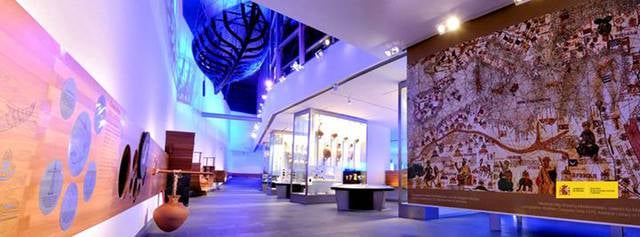
Museum in Spain. The National Museum of Subaquatic Archaeology in Cartagena, Spain is an underwater archaeology museum. It owns a large collection of pieces recovered from shipwrecks that begins in the Phoenician period, and arrives until the 19th century.
On December 2, 2012, the 14.5 tons cargo of gold and silver coins recovered from the wreck of the frigate Nuestra Señora de las Mercedes was deposited in the museum for cataloging, study and permanent display.[1]
Address: Paseo Alfonso XII, 22, 30202 Cartagena
Museo Naval
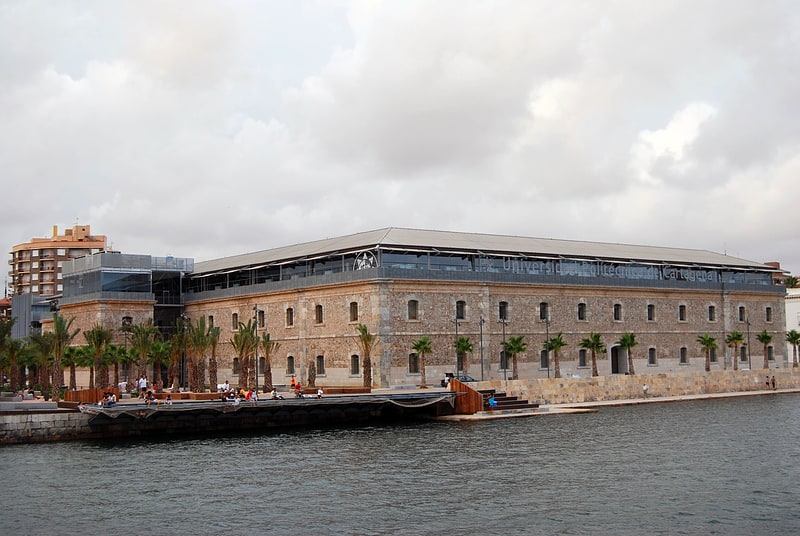
Museum in Cartagena, Spain. The Cartagena Naval Museum is a military museum near the city port of Cartagena, Spain. It presents exhibitions related to naval construction. It is a subsidiary of the Naval Museum of Madrid.[2]
Address: Paseo Alfonso XII, s/n, 30201 Cartagena
Historical Military Museum of Cartagena
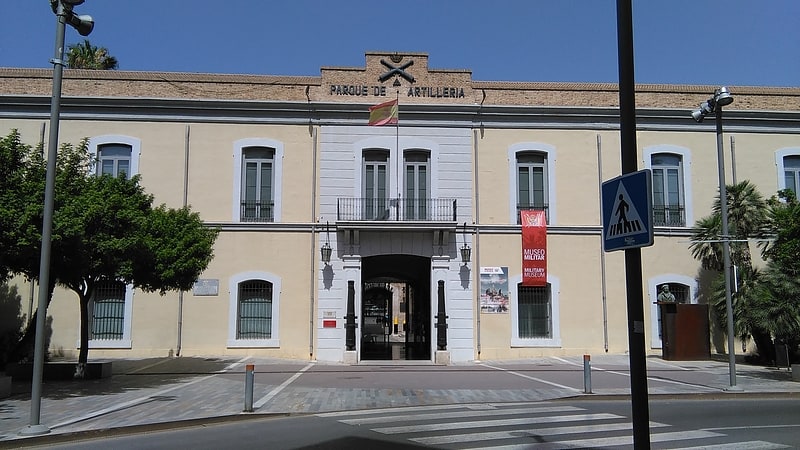
Also known as: Museo Histórico Militar de Cartagena
Museum in Cartagena, Spain. The Museo Histórico Militar de Cartagena is a military museum dedicated to Spanish Army History, and is located in Cartagena, Spain[3]
Address: Plaza General Lopez Pinto s/n, 30201 Cartagena
Roman theatre
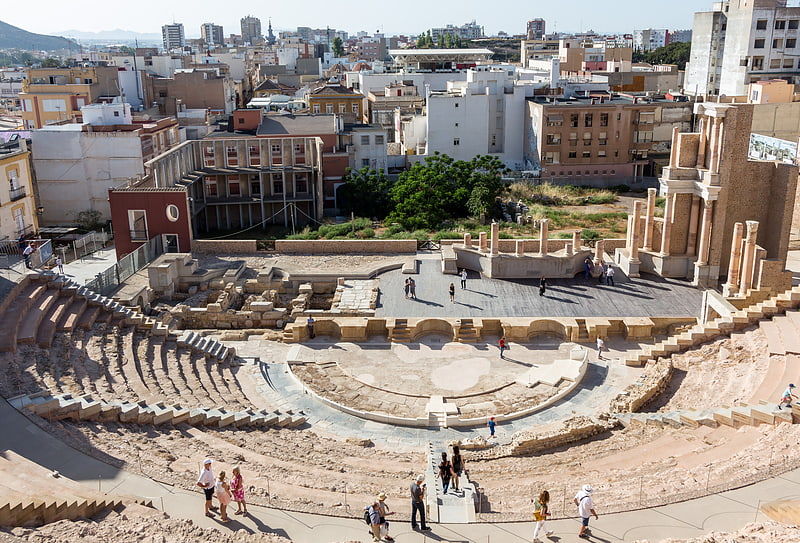
Also known as: Teatro romano de Cartagena
Historical landmark in Cartagena, Spain. The Roman Theatre is an ancient Roman theatre in Cartagena, Spain.[4]
Address: Plaza Ayuntamiento, 9, 30202 Cartagena
La Catedral
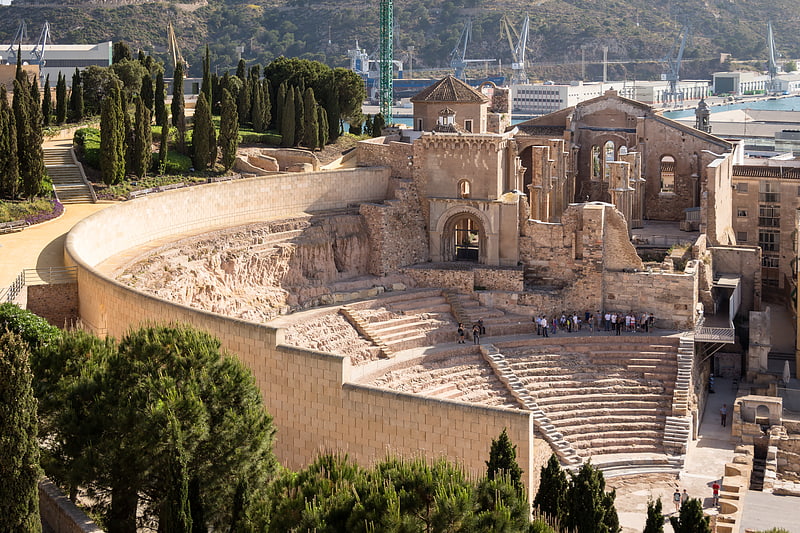
Also known as: Catedral de Cartagena
Church ruins adjoining a Roman theater. The Cathedral of Cartagena in Spain, or the Cathedral of Santa María la Vieja, was a cathedral of the Diocese of Cartagena, located on the hill of La Concepción in the old town of Cartagena. It has been in ruins since 1939, when it was destroyed when Cartagena was shelled in the Spanish Civil War by Nationalist forces.[5]
Address: Plaza Condesa de Peralta, 7, 30202 Cartagena
Heroes of Cavite and Santiago de Cuba
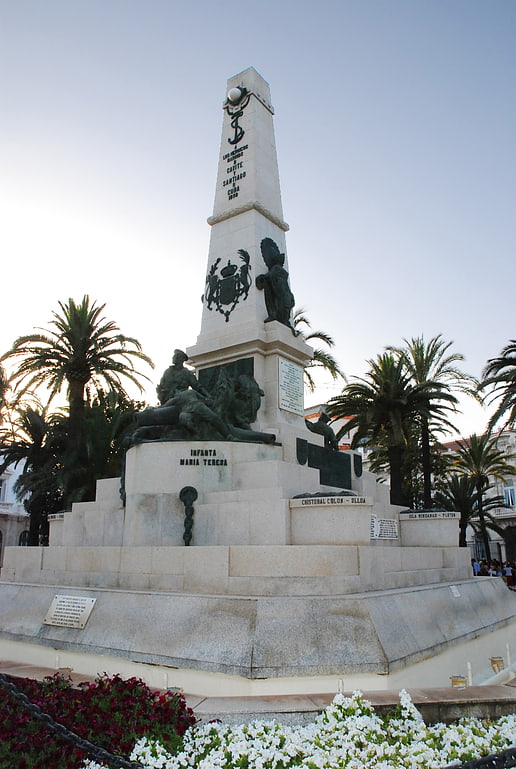
The Monument to the Heroes of Cavite and Santiago de Cuba is an instance of public art and war memorial in Cartagena, Spain. It commemorates the role of the naval squadrons commanded by Patricio Montojo and Pascual Cervera during the 1898 Spanish–American War.[6]
Address: Calle Pescadería, 30201 Cartagena, Cartagena
Muralla Púnica
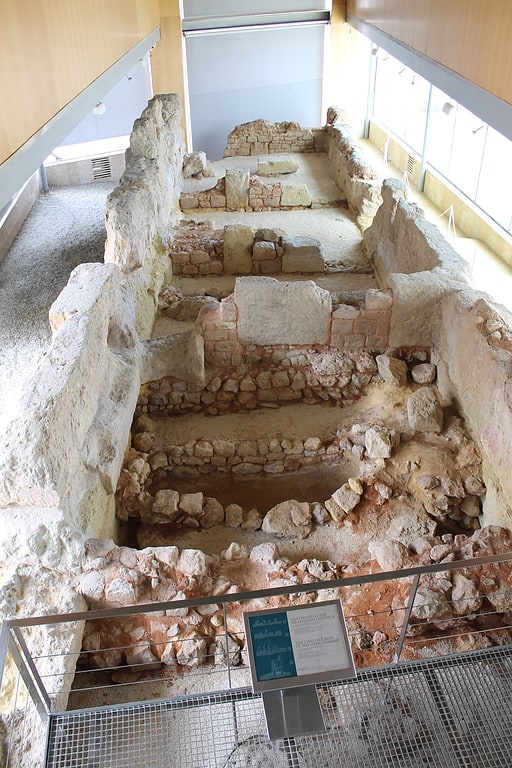
Also known as: Muralla púnica de Cartagena
Archaeological museum with ancient walls. The Punic wall of Cartagena is an archaeological site from the 3rd century BC in which can be seen the first defensive wall of Cartagena, built by the Carthaginians.
This is an important site because it is one of the few remains of Carthaginian civilization in Spain, and the walls bear witness to one of the most important events of Ancient history in the Mediterranean Sea: the Second Punic War.[7]
Address: Calle de San Diego 25, 30390 Cartagena
Despeñaperros Castle
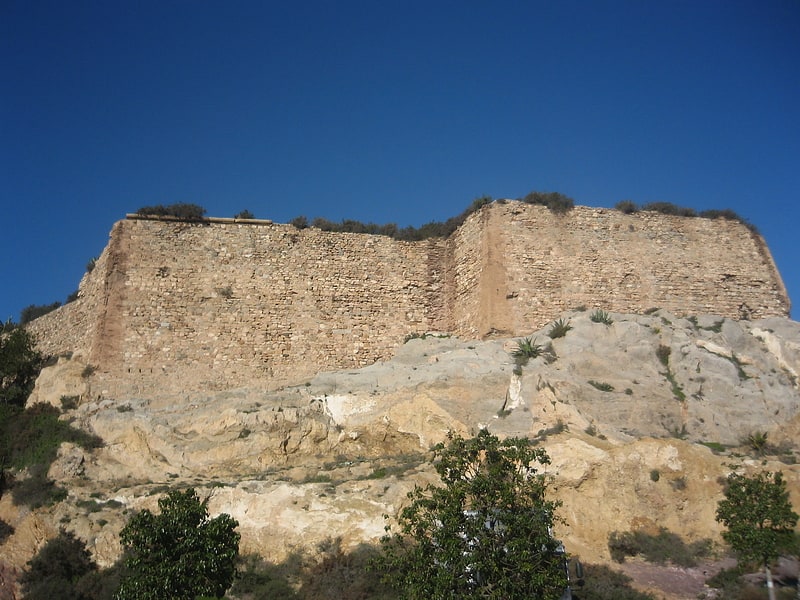
Also known as: Castillo de Despeñaperros
Despeñaperros Castle also known as San José Castle, is a castle built in the 18th century in the historic center of Cartagena, Murcia Region in Spain. It was declared a cultural site on 7 August 1997. The walls are composed of masonry and generally flat. The interior of the fortification is divided in two perimeters, the lower with rooms for the occupants and a water reservoir, and an upper space occupied by the cannons, and which has lost gunships.[8]
Castillo de San Julián

Castle in the Region of Murcia, Spain. The Castillo de San Julián, also known as Saint Julian's Fort, is a fort in Cartagena, Spain. It was built between the 18th and 19th centuries, incorporating a tower which had been built by the British in 1706. The fort remains intact today, but it is in a rather dilapidated state.[9]
Cave of Los Aviones
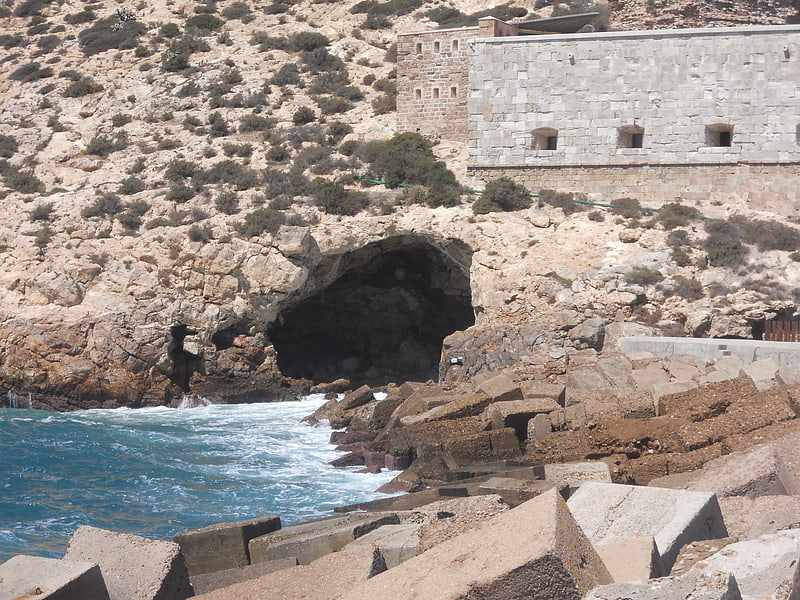
Cave of Los Aviones, located at sea level near Cartagena in southeastern Spain, is a paleontology site dating back to the Middle Paleolithic era. It is famous for having yielded in 2010 several perforated and painted seashell beads thought to have been crafted as jewelry by Neanderthals.
The cave is a cemented marine conglomerate. The site has yielded ochred and perforated marine shells, red and yellow colorants, and shell containers that feature residues of complex pigment mixtures. The pigments on the sea shells were dated to 115,000 years old, making these "the oldest personal ornamentation known anywhere in the world," predating Homo sapiens. Art is an archaeological proxy for symbolic behavior.[10]
Cala Cortina
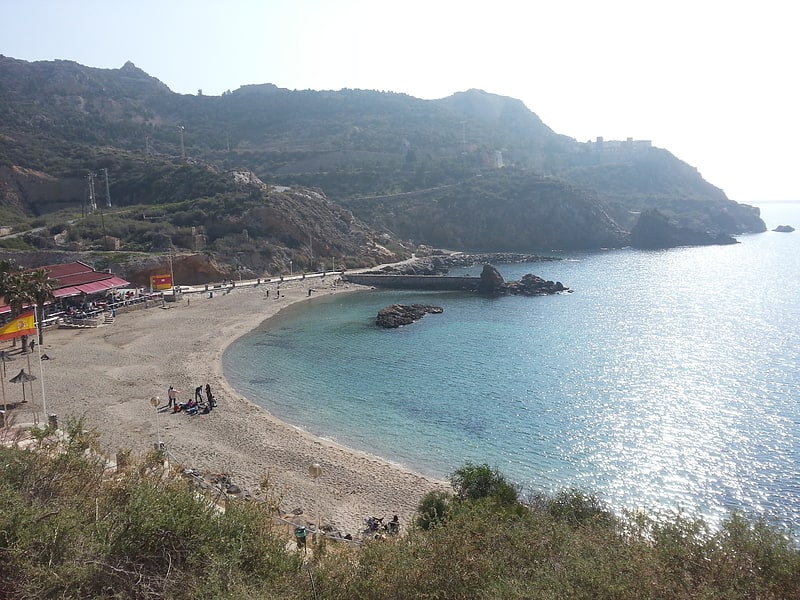
Cala Cortina is a beach in the city of Cartagena, near the port and the neighborhood of Santa Lucia.